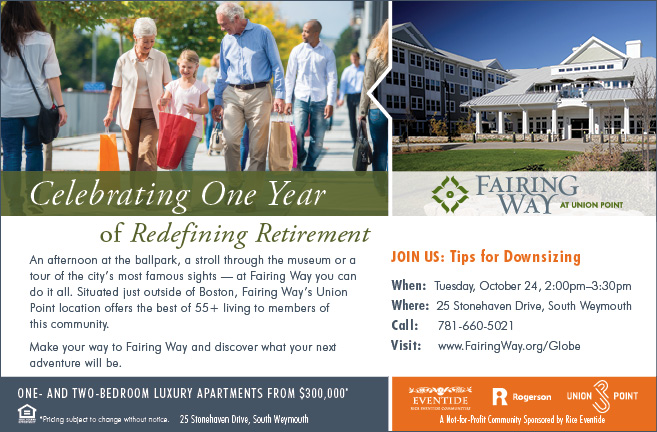Whether you’re catching up on your emails or still scrambling to find the perfect costume for Halloween, take a quick break from your Monday to catch up with the most engaging senior marketing content from the past week.
First, USA Today offers insights as to why more older adults are making the decision to skip out on the warm weather and beaches of Florida, in favor of retiring in their current location. And in our most shared piece of the week, we’ll review action steps that professionals in the senior living industry should be taking to appeal to the rising number of senior home renters.
Most Clicked: Seniors Saying No to Florida
Last week, USA Today published an article by Paul Davidson detailing a current trend when it comes to where older adults are choosing to spend their retirement.
In the past, many retirees dreamed of spending their retirements on the beaches of Florida. According to a survey conducted by Ipsos in conjunction with USA Today, 43% of Americans between the ages of 45 and 65 plan on spending their golden years in their current homes.
Jon Rork, an economics professor at Reed College shared insights on the appeal of staying at home for today’s seniors: “It’s the hassle, the physical cost and the psychological cost of leaving friends behind.”
According to the author, this generation of seniors is more likely to forgo a destination retirement if it means that they get to be closer to their friends and family and don’t have to deal with the stress of uprooting their lives. Even for those older Americans who plan on moving once they retire, 22% of them have stated a preference to remain in the same state.
A big takeaway from the article that hasn’t gone unnoticed here at Creating Results is that, while warm weather year-round can be a plus, many people just want to live in a place where they’ll be able to have a fulfilling lifestyle. “There’s just nothing here to do,” Lisa Rhodes, 58, said of her hometown of Dauphin, PA.
We always recommend leading with lifestyle when marketing your senior living products and services. The quote from Lisa Rhodes shows that there are still opportunities for those marketing senior living communities to amplify the lifestyle in the community at large — both on campus and in the surrounding area. An example of this can be found in an ad that we designed for our client, Fairing Way, below:
Older adults want to live in a place where opportunities to pursue their passion — fishing, golf, art, etc. — are accessible, whether they are living in the home they raised their families in, an age-restricted community or a continuing care retirement community (CCRC). As more providers offer these opportunities to seniors, there is a reduced desire for them to uproot their lives for greener pastures.
Click here to read more about why older adults are choosing not to move during retirement.
Most Shared: Middle-Aged Renters on the Rise
There was renewed interest in a blog post published by Creating Results in March of 2016 detailing yet another growing trend among the 50-and-over demographic in America: renting.
The blog post (written by yours truly) recaps a study conducted by Harvard University’s Joint Center for Housing Studies, which provides insights into some of the main factors contributing to the rising number of senior renters.
In fact, the graph below depicts renter household growth in American from 2005-2015:
 The Baby Boom and pre-Baby Boom generations account for over half of renter growth during the time period studied. According to the Pew Research Center, the number of seniors choosing to rent is continuing to increase.
The Baby Boom and pre-Baby Boom generations account for over half of renter growth during the time period studied. According to the Pew Research Center, the number of seniors choosing to rent is continuing to increase.
In the blog post, we offered recommendations for mature marketers which we believe are as relevant today as they were a year and a half ago:
- Don’t dwell on the negatives of aging. While safety and support are very important to consumers in the 50-and-over demographic, we don’t recommend front loading your marketing with tales of doom and gloom. While we all recognize that falls, illness and even memory loss are part of aging, we prefer to depict a more positive image of getting older. For example, a maintenance-free home means that older adults can spend more time participating in social, cultural and recreational activities, and less time worrying about how much their next home repair will be.
- Know what consumers in your targeted segment value. The study showed that accessibility is something that renters above the age of 50 truly value. And yet, very few available rentals have the universal accessibility features needed to accommodate middle-aged renters. If the home you’re offering for rent does have these features, you already have a leg up on the competition. Now it’s up to you to invest in professional photography to accentuate these assets in a way that will resonate with your target audience.
Click here to read the full blog post and for more insights on marketing your rental properties to older adults now, and in the future.



